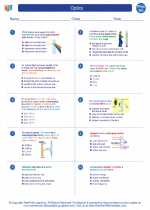Rough Endoplasmic Reticulum
The rough endoplasmic reticulum (RER) is a network of membranes found in eukaryotic cells, particularly in the cytoplasm. It is called "rough" because its surface is studded with ribosomes, giving it a bumpy appearance when viewed under a microscope. The RER plays a crucial role in the synthesis and processing of proteins.
Structure:
The RER consists of a series of interconnected tubules and flattened sacs called cisternae. The surface of the RER is covered with ribosomes, which are responsible for protein synthesis. These ribosomes give the RER its rough appearance.
Function:
The main function of the rough endoplasmic reticulum is to facilitate the synthesis of proteins. Ribosomes on the surface of the RER translate the genetic code from messenger RNA (mRNA) into specific amino acid sequences, which are then assembled into proteins. The proteins synthesized in the RER are typically destined for secretion, incorporation into the cell membrane, or for use within the cell itself.
In addition to protein synthesis, the RER also plays a role in protein folding and modification. As the newly synthesized proteins enter the RER, they undergo post-translational modifications such as glycosylation and disulfide bond formation. These modifications are essential for the proper functioning of the proteins.
Study Guide:
- Describe the structure of the rough endoplasmic reticulum.
- Explain the role of ribosomes in protein synthesis on the rough endoplasmic reticulum.
- Discuss the functions of the rough endoplasmic reticulum, including protein synthesis, folding, and modification.
- Compare and contrast the rough endoplasmic reticulum with the smooth endoplasmic reticulum in terms of structure and function.
- Provide examples of proteins that are synthesized and processed in the rough endoplasmic reticulum and their subsequent destinations within the cell or outside the cell.
Understanding the structure and function of the rough endoplasmic reticulum is essential for comprehending the processes of protein synthesis and secretion in eukaryotic cells. It also provides insights into the interconnected nature of cellular organelles and their roles in maintaining cellular homeostasis.
.


